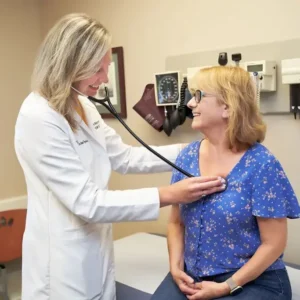Introduction
In the vast and complex world of biotechnology, few cell lines have played as pivotal a role as CHO-S cells. These cells – derived from the Chinese Hamster Ovary (CHO) cell line – have become the cornerstone of modern biopharmaceutical manufacturing, responsible for producing the majority of therapeutic proteins, including monoclonal antibodies, enzymes, and vaccines. But what exactly are CHO-S cells, why are they so widely used, and how have they shaped the pharmaceutical industry? This comprehensive guide explores their origins, biology, applications, and future potential.
Definition
Chinese Hamster Ovary (CHO) S cells are a widely used mammalian cell line derived from the ovary of the Chinese hamster. They are adapted for growth in suspension culture, making them highly suitable for large-scale biotechnology applications. CHO-S cells are commonly employed in the production of recombinant proteins, monoclonal antibodies and other therapeutic biologics due to their ability to perform complex post-translational modifications similar to human cells, ensuring proper protein folding and function.
The Origins of CHO Cells
The story of CHO cells begins in the 1950s at the Wistar Institute in Philadelphia, where scientists first isolated ovarian cells from the Chinese hamster (Cricetulus griseus). Initially, CHO cells were used for genetic and cytogenetic research due to their simple chromosome structure and stability in culture. Over time, researchers realized that these cells could be adapted to grow in artificial environments – an essential feature for use in laboratory and industrial processes.
The “CHO-S” variant, developed later, stands for CHO-Suspension, referring to its ability to grow in suspension rather than attached to a surface. This characteristic makes CHO-S cells particularly valuable for large-scale bioreactor cultures, enabling the production of biopharmaceuticals in quantities suitable for global demand.
What Are CHO-S Cells?
CHO-S cells are a sub-line of CHO cells that have been optimized for high-density, serum-free, and suspension culture. They are non-adherent, meaning they float freely in the culture medium, which is critical for scalable industrial production.
Some defining features of CHO-S cells include:
- Adaptation to serum-free media: Unlike early CHO lines that required animal-derived serum, CHO-S cells thrive in chemically defined, serum-free conditions. This minimizes contamination risks and enhances reproducibility – key requirements for regulatory approval in pharmaceutical manufacturing.
- High protein productivity: CHO-S cells can be genetically engineered to produce complex recombinant proteins with high yields.
- Human-compatible post-translational modifications: They are capable of adding post-translational modifications, such as glycosylation, similar to those found in human cells. This is crucial for therapeutic proteins to function correctly and avoid immune rejection.
- Genetic stability and scalability: CHO-S cells maintain genetic stability across many generations, allowing consistent protein production over time and across large-scale bioreactors.
Why CHO-S Cells Are the Industry Standard
The dominance of CHO-S cells in the biopharmaceutical industry isn’t accidental—it results from decades of optimization, reliability, and regulatory familiarity. Here are the main reasons they are considered the “workhorse” of biologics production:
Safety and Proven Track Record:
CHO cells are non-human and non-viral in origin, reducing the risk of contamination with human pathogens. They have been used safely for decades in the production of therapeutic proteins, earning the trust of regulators like the FDA and EMA.
Flexibility in Genetic Engineering:
CHO-S cells are highly amenable to genetic modification. Using plasmid transfection or viral vectors, scientists can insert genes encoding a target protein, select high-yield clones, and rapidly scale up production. New technologies like CRISPR-Cas9 have further enhanced the precision and speed of CHO-S cell line development.
Capability to Produce Complex Proteins:
Many therapeutic proteins require intricate folding and glycosylation patterns that bacterial systems (like E. coli) cannot perform. CHO-S cells, as mammalian cells, naturally possess the necessary cellular machinery to generate biologically active, correctly folded proteins.
Scalability and Process Control:
Since CHO-S cells grow in suspension, they can be cultured in large bioreactors—ranging from a few liters in research settings to tens of thousands of liters in industrial facilities. Bioreactor systems allow precise control of temperature, pH, oxygen, and nutrient supply, optimizing cell growth and protein yield.
Regulatory Familiarity:
Given their long-standing use, CHO-derived products have an extensive safety and performance record. Regulatory authorities are familiar with their characteristics, streamlining the approval process for new therapeutics manufactured using these cells.
Applications of CHO-S Cells in Biopharmaceuticals
The impact of CHO-S cells spans across the entire biopharmaceutical landscape. Some key applications include:
1. Monoclonal Antibody Production
Perhaps the most significant contribution of CHO-S cells is in the production of monoclonal antibodies (mAbs) – therapeutic proteins that target specific disease molecules. From cancer therapies like trastuzumab (Herceptin®) to autoimmune treatments like adalimumab (Humira®), many blockbuster biologics are produced using CHO-S cells.
2. Recombinant Protein Therapeutics
CHO-S cells are used to manufacture hormones (such as erythropoietin), clotting factors, and growth factors. Their ability to correctly glycosylate proteins ensures these therapeutics closely mimic their natural human counterparts.
3. Vaccine Production
CHO-S cells also play a role in vaccine development, serving as hosts for the expression of viral antigens or subunits. Their scalability and safety profile make them ideal for producing vaccines in large quantities.
4. Gene and Cell Therapy Research
Beyond protein production, CHO-S cells serve as valuable models for testing gene delivery systems, optimizing vector production, and studying cellular processes relevant to gene therapy development.
How CHO-S Cell Culture Works
Culturing CHO-S cells requires careful optimization of conditions to ensure both high cell density and high product yield. The general workflow includes:
- Cell Line Development: Scientists introduce the gene encoding the target protein into CHO-S cells, followed by selection of clones with optimal expression and growth characteristics.
- Scale-Up: Once a high-performing clone is identified, cultures are expanded from small shake flasks to large bioreactors.
- Production Phase: Under tightly controlled conditions, CHO-S cells are maintained in nutrient-rich media to promote protein expression.
- Harvest and Purification: The protein is secreted into the medium, collected, and purified through downstream processes such as filtration and chromatography.
- Quality Control: The final product undergoes rigorous testing to ensure correct folding, glycosylation, purity, and biological activity.
Each step is critical, as even small changes in conditions can affect the quality or yield of the final product.
Recent Advances in CHO-S Cell Engineering
The biotechnology community continues to innovate around CHO-S cell technology. Modern advances include:
- Omics and Systems Biology Approaches: Genomic and transcriptomic analyses allow scientists to better understand CHO cell metabolism and optimize it for higher productivity.
- Synthetic Biology and Metabolic Engineering: Researchers are reprogramming CHO-S cells to fine-tune glycosylation patterns and improve yields.
- Perfusion Bioreactors: Continuous culture systems are replacing traditional batch methods, maintaining CHO-S cells in optimal conditions for extended periods and enhancing productivity.
- Automation and AI Integration: Machine learning algorithms are increasingly used to predict and optimize culture conditions, accelerating process development.
These innovations are paving the way for faster, more cost-effective production of next-generation biologics.
Challenges and Limitations
While CHO-S cells are the gold standard, they are not without drawbacks. Some of the main challenges include:
- High production costs: Mammalian cell culture is more expensive than microbial systems due to costly media and complex infrastructure.
- Variable glycosylation patterns: Although CHO cells perform human-like glycosylation, differences can still occur, potentially affecting drug efficacy or safety.
- Process complexity: CHO-based bioproduction requires highly controlled environments and rigorous quality assurance, making it resource-intensive.
Nevertheless, ongoing research is addressing these limitations through improved cell lines, optimized media, and process innovations.
Future Trends of Chinese Hamster Ovary (CHO) S Cells Market
Rising Demand for Biologics and Biosimilars:
The global expansion of biologic drugs – such as monoclonal antibodies, vaccines, and recombinant proteins – is driving the CHO-S cells market. With patents expiring on blockbuster biologics, biosimilar production is surging, increasing the need for efficient CHO-S cell lines.
Technological Advancements in Cell Line Engineering:
New genetic engineering tools like CRISPR-Cas9, omics analysis, and synthetic biology are enhancing CHO-S cell productivity, stability, and glycosylation precision. These innovations are leading to more consistent and high-yield biomanufacturing.
Shift Toward Continuous Bioprocessing:
Traditional batch cultures are gradually being replaced by continuous perfusion systems, enabling higher output and better product quality. This trend supports sustainable, cost-effective biopharmaceutical production.
Increased Automation and AI Integration:
Automation, artificial intelligence, and data analytics are transforming CHO-S cell culture optimization. Predictive modeling and real-time monitoring are helping reduce production costs and accelerate process development.
Expansion in Emerging Markets:
Countries in Asia-Pacific and Latin America are investing heavily in biomanufacturing infrastructure. This regional growth is expected to boost demand for CHO-S cells, expanding the global footprint of the market.
Growth Rate of Chinese Hamster Ovary (CHO) S Cells Market
According to Data Bridge Market Research, the chinese hamster ovary (CHO) S cells market was estimated to be worth USD 22.26 million in 2024 and is projected to grow at a compound annual growth rate (CAGR) of 7.78% to reach USD 40.55 million by 2032.
Learn More: https://www.databridgemarketresearch.com/reports/global-chinese-hamster-ovary-cho-s-cells-market
Conclusion
From their humble beginnings as hamster ovary cells to their current role as the powerhouses of the biopharmaceutical industry, CHO-S cells have revolutionized how we produce life-saving medicines. Their unique combination of scalability, safety, and adaptability has made them indispensable in the manufacture of therapeutic proteins that improve and save millions of lives worldwide.





